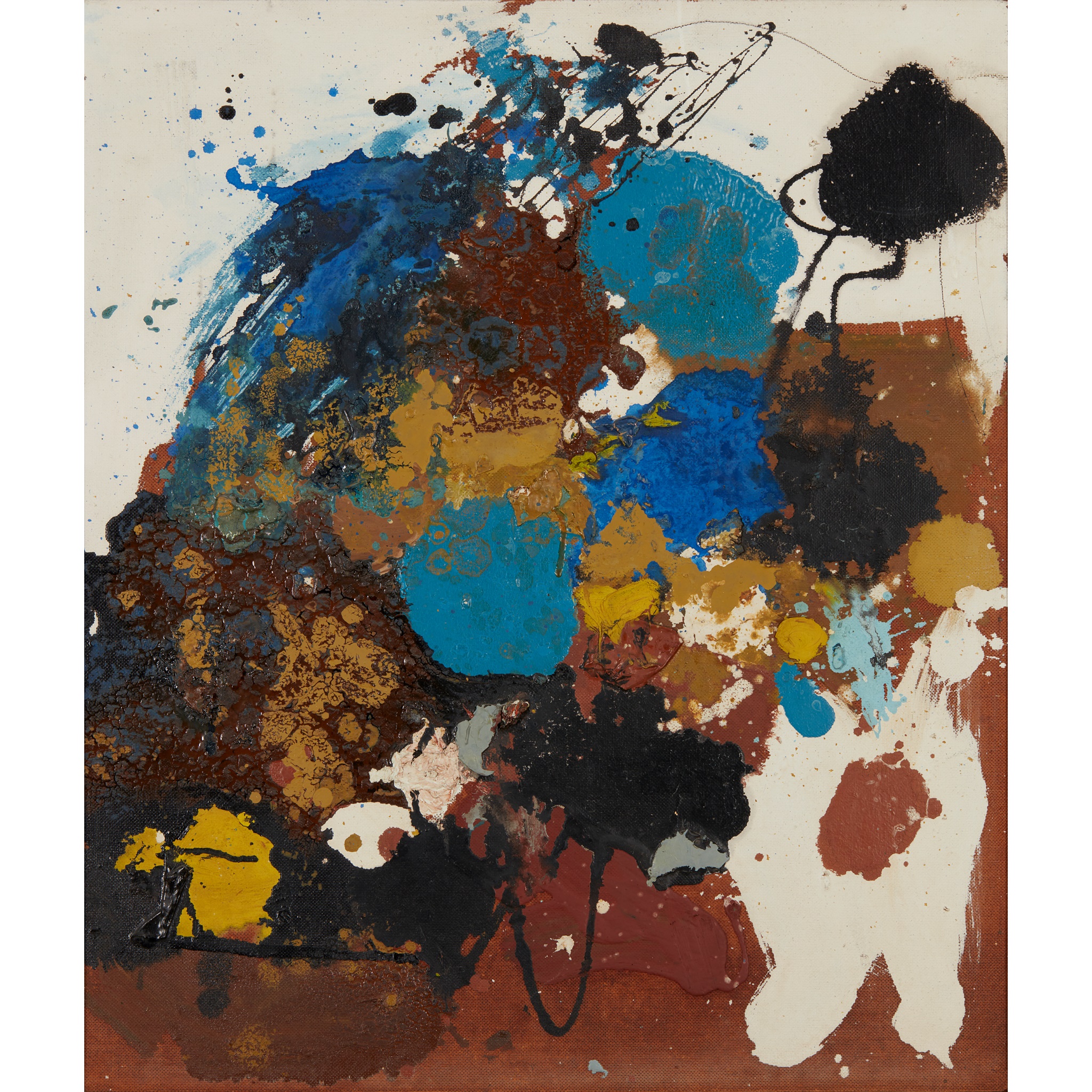GILLIAN AYRES (BRITISH 1930-) §
UNTITLED - C.1957-59
£15,120
Contemporary Art // Prints & Multiples
Auction: Contemporary Art: 10 January 2024 | From 10:00
Description
Oil on canvas board
Dimensions
64cm x 55cm (25.25in x 21.5in)
Provenance
Collection of the Late Dr. Tom Scott, sold to benefit the National Trust for Scotland.
Footnote
‘What was to go on the canvas was not a picture but an event.’* – Harold Rosenberg
As Ayres states in her letter to the owner of the painting offered here, this untitled oil dates between the years 1957 and 1959. Even without Ayres’ guidance, however, one can easily visually place this work early in the chronology of her career. Her technique evolved throughout the course of her life, and this piece epitomises the exciting and formative period which saw her first find her footing in the art world.
Ayres is now regarded as one of Britain’s leading abstract painters. She studied at the Camberwell School of Art, quickly forming a tightknit group with artists including Howard Hodgkin, Terry Frost, Adrian Heath and Frederick Gore. They were united by a desire to break away from the current status quo, and were intrigued by the disruptive influence of the art and writings of Roger Hilton. From the very beginning Ayres committed to abstraction, being one of the earliest British artists to truly absorb the influence of the Abstract Expressionists. Like (but not necessarily because of) Jackson Pollock, she would pour her paints, often using a mix of oils and the cheap French household enamel paint Ripolin (as seen in the present work) on rough pieces of board.
1957 was an important year for Ayres. She was commissioned to paint a large-scale mural to decorate the dining room of South Hampstead High School. She applied pigment using rags and her hands, or by squirting paint directly from the tube, and used a brush only sparingly, if at all. She worked on a turps-laden surface, keeping the oils solvent and fluid which allowed her to make gestural marks swiftly and instinctively. The art writer and curator Lawrence Alloway was impressed by the murals, which he described as ‘explosive showers of sensual paint… the first use of tachisme to decorate a British building’ in an issue of Architectural Design. He subsequently invited her to show at the exhibition ‘Metavisual, Tachiste, Abstract: Painting in England Today’, at the Redfern Gallery.
She was also the only woman to be featured in the ‘Situation’ exhibition at the RBA Galleries in 1960. It was the first group show of British abstract art of the new decade, and wholly comprised of large-scale works by artists including William Turnbull, Robyn Denny, and Bernard Cohen. ‘Situation’ is now considered of landmark art-historical significance, but at the time it was in fact largely shunned by the viewing public. As Ayres wryly remarked, ‘Everybody turned up at the opening of Situation, the whole art world, but then there was never really anyone else for the whole month. It’s always mentioned as though it was some great big success’. As abstraction was coolly received by the British public initially, Ayres would not find renown until the 1980s. Further restrictions were placed on her practice by the responsibilities of parenting two sons, and the necessity to teach to make ends meet.
In an interview for her 2017 retrospective at the National Museum of Cardiff, Ayres discusses how important the Snowdonian mountain range was to her practice in the late 1950s. In her own words, ‘When we could afford to leave London for a weekend, if we didn’t go to Paris we went to North Wales’. Ayres visited many times from 1951 onwards, staying in her sister’s cottage in the mining village of Corrin. She approximated that she climbed Cader Idris up to seventeen times. Ayres would eventually move to Wales for several years in the 1980s, taking on an old rectory on the Llyn Peninsula.
Like J. M. W. Turner and John Piper before her, the dramatic Welsh peaks provoked in Ayres an exploration of the sublime. Though her work was never directly (or indeed indirectly) representational, she did admit that during her climbs she started ‘to see the world like painting [..] When you went up a mountain there were these clouds coming in. One really started to see everything in paint’. In the work offered here there is an active sense of elemental drama, her mark-making suggestive of a surging verticality. In this way it has much in common with works like Distillation, 1959 (Tate’s collection), and Cumuli, 1959 (private collection).
*This famous description of the American Abstract Expressionists made a strong impression on Ayres and her practice.

